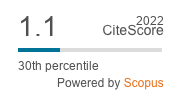Dinámica sociodemográfica metropolitana y segregación residencial: ¿qué aporta la CASEN 2006?
DOI:
https://doi.org/10.4067/S0718-34022008000300005Keywords:
Residential Segregation, CASEN survey, Metropolitan Area of SantiagoAbstract
By processing microdata from the CASEN 2006 survey, the following findings arise: a) the Metropolitan Region of Santiago and the Greater Santiago Metropolitan Area (GSMA) continue to experience net outmigration; b) this condition is not driven by a process of “concentrated deconcentration” (as it is defined in the technical literature), but rather by a process of actual deconcentration; c) the territorial and demographic expansion of the GSMA is concentrated in three peripheral municipalities, where growth is driven by massive in-migration from other municipalities of the GSMA; d) in spite of its strong housing growth, the population residing in the municipality of Santiago is still decreasing; e) intrametropolitan migration does not help to narrow the deep residential segregation of the GSMA. These results, among others, have several policy implications andsuggest that the CASEN survey could become a powerful source for migration analysis during intercensal periods






